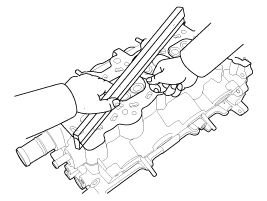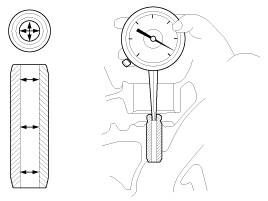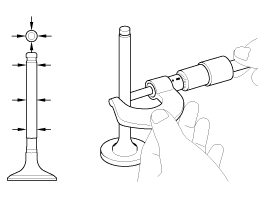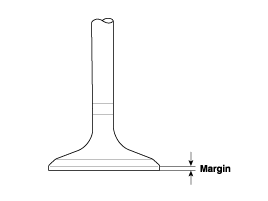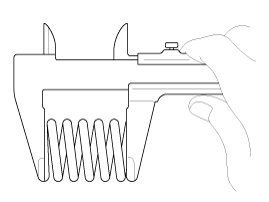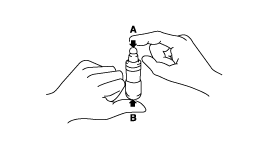With the HLA filled with engine oil, hold A and press B by hand. If B moves, replace the HLA.
Problem | Possible cause | Action |
1. Temporary noise when starting a cold engine | Normal | This noise will disappear after the oil in the engine reaches the normal pressure. |
2. Continuous noise when the engine is started after parking more than 48 hours. | Oil leakage of the high pressure chamber on the HLA, allowing air to get in. | Noise will disappear within 15 minutes when engine runs at 2000-3000 rpm.If it doesn’t disappear, refer to step 7 below. |
3. Continuous noise when the engine is first started after rebuilding cylinder head. | Insufficient oil in cylinder head oil gallery. |
4. Continuous noise when the engine is started after excessively cranking the engine by the starter motor or band. | Oil leakage of the high-pressure chamber in the HLA, allowing air to get in.Insufficient oil in the HLA. |
5. Continuous noise when the engine is running after changing the HLA. | Do not run engine at a speed higher than 3000 rpm, as this may damage the HLA. |
6. Continuous noise during idle after high engine speed. | Engine oil level too high or too low. | Check oil level.Drain or add oil as necessary. |
Excessive amount of air in the oil at high engine speed. | Check oil supply system. |
Deteriorated oil. | Check oil quality.If deteriorated, replace with specified type. |
7. Noise continues for more than 15 minutes. | Low oil pressure. | Check oil pressure and oil supply system of each part of engine. |
Faulty HLA. | Remove the cylinder head cover and press HLA down by hand.If it moves, replace the HLA. Be careful with the hot HLAS. |
